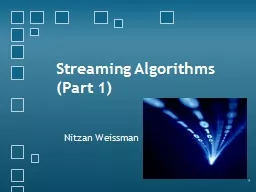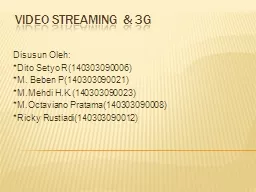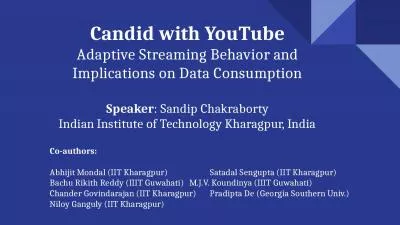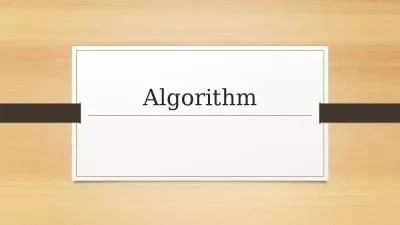PPT-Streaming Algorithm
Author : ellena-manuel | Published Date : 2016-08-01
Presented by Group 7 Advanced Algorithm National University of Singapore Min Chen Zheng Leong Chua Anurag Anshu Samir Kumar Nguyen Duy Anh Tuan Hoo Chin Hau
Presentation Embed Code
Download Presentation
Download Presentation The PPT/PDF document "Streaming Algorithm" is the property of its rightful owner. Permission is granted to download and print the materials on this website for personal, non-commercial use only, and to display it on your personal computer provided you do not modify the materials and that you retain all copyright notices contained in the materials. By downloading content from our website, you accept the terms of this agreement.
Streaming Algorithm: Transcript
Download Rules Of Document
"Streaming Algorithm"The content belongs to its owner. You may download and print it for personal use, without modification, and keep all copyright notices. By downloading, you agree to these terms.
Related Documents














